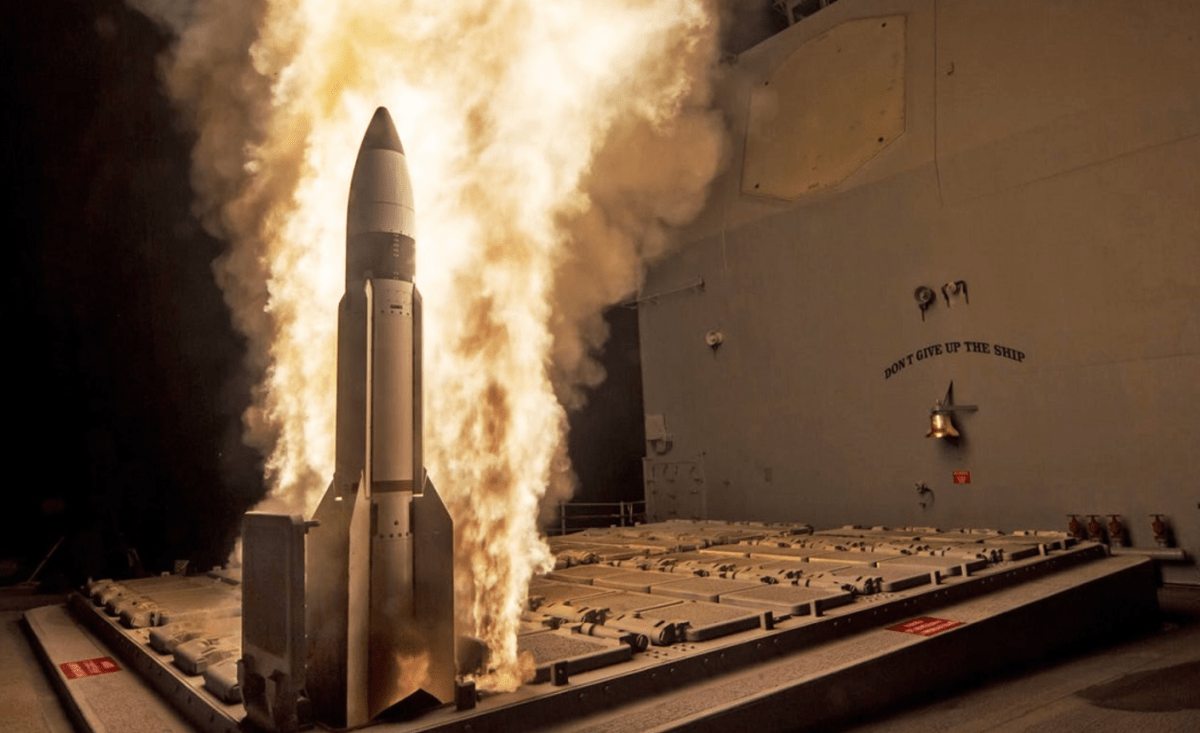[ad_1]
There was a cool rock song from the 1970s, from a Detroit rocker by the name of Alice Cooper.
It was called, “Welcome to my nightmare.â€
Alice was no Bob Dylan, but he was great on stage, and his theatrics became legendary to rock fans and aficionados.
Well, Beijing and Xi Jinping have a new “nightmare†to face, and I’m afraid it is a biggie. It’s called “power-scaling laser†technology.
Remember that phrase, you will be hearing more about it in the near future, I am sure.
According to Wikipedia, laser power scaling is increasing the output power without changing the geometry, shape, or principle of operation.
In short, the US military is developing lasers that travel from warships into space — Star Wars stuff, ladies and gents.
Oh, and new interceptor missiles able to knock out enemy intercontinental ballistic missiles (ICBMs) beyond the earth’s atmosphere, plus …. drum roll, please … an entirely new generation of ship-integrated radar.
Seriously, this is no joke. This could dent China’s ICBM missile capability.
According to a report by Kris Osborn of National Interest, all of these are all fast-informing ongoing Navy and Missile Defense Agency (MDA) projects which aim to expand the defensive capabilities of Aegis-radar enabled ships at sea.
Back to “power-scaling†laser technology.
The MDA is now working to engineer the needed form factors and levels of on-board expeditionary electrical power and cooling to explore the possibility of taking promising ship-fired laser technology further into a missile defense arena.
Translation? They are pouring money down a hole, and hoping for the best.
Meanwhile, lasers are already arming ships across the US Navy, and fast-technological progress is bringing new tactical options to maritime warfare, National Interest reported.
Alongside the promise of lasers, the Navy and MDA are also making great progress when it comes to destroying ICBMs with a new larger, longer-range and more precise variant of the SM-3 missile, the SM-3 IIA.
The latter is already showing an ability to take out ICBMs and expand the defensive scope of ship based ballistic missile defense beyond air and cruise missile defense and endoatmospheric ballistic missile defense to destroy targets beyond the earth’s atmosphere to a greater degree.
Bingo! Hitting ICBMs before they even make it across the ocean.
With newer missile defenses at sea, ships can offer new nodes or points of attack within a broader web of defenses to bring new vectors, angles or opportunities to destroy enemy weapons in space, National Interest reported.
New ship-integrated missile defense radar, engineered to build upon existing Aegis radar system, is intended to leverage promising technology from the Missile Defense Agencies evolving Long Range Discrimination Radar (LRDR) expected to be operational later this year.
Once the next several phases of testing are complete, the MDA will declare its new highly sensitive ICBM and hypersonic missile detecting radar operational, National Interest reported.
The LRDR is intended to help “steer†or guide Ground Based Interceptors to ICBMs by properly discriminating targets in space.
As part of its technical scope, part of which incorporates the use of gallium nitride (GaN) to increase radar power density and throughput, Lockheed is building a scalable maritime variant of the LRDR called SPY-7.
The SPY-7 is a ship-based maritime radar now being integrated into Canadian and Japanese warships.
According to Lockheed Martin, SPY-7 uses GaN as its material building block, which allows for better cooling of the radar – leading to increased and sustained performance.
Instead of one array scanning across an area, the radar is made up of thousands of mini scanners, enabling solid state coverage of the surveillance area.
This subarray-based structure makes the radar easily upgradeable as threats evolve.Â
According to Breaking Defense, the service’s top admiral is mapping a plan to get hypersonic missiles and lasers on ships as quickly as he can.Â
Admiral Mike Gilday is focused on getting hypersonic missiles on his Zumwalt destroyers first, using the long-troubled three ship class as a testbed for installing the weapon on other ships across the fleet, he said recently.
“I definitely need deeper magazines, physically deeper magazines, to be able to handle hypersonics,†Gilday told Breaking Defense.
“And what I want as a testbed for that, the first surface ships that are going to have hypersonics, are going to be the Zumwalts. That’s a focus for us to field that system on the Zumwalt destroyers so that we can prove it and field it fast, and then scale it.â€
[ad_2]
Source link













